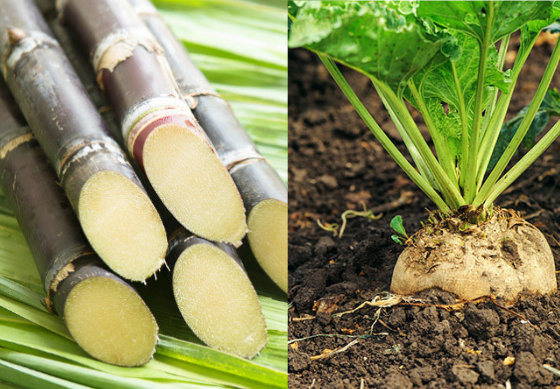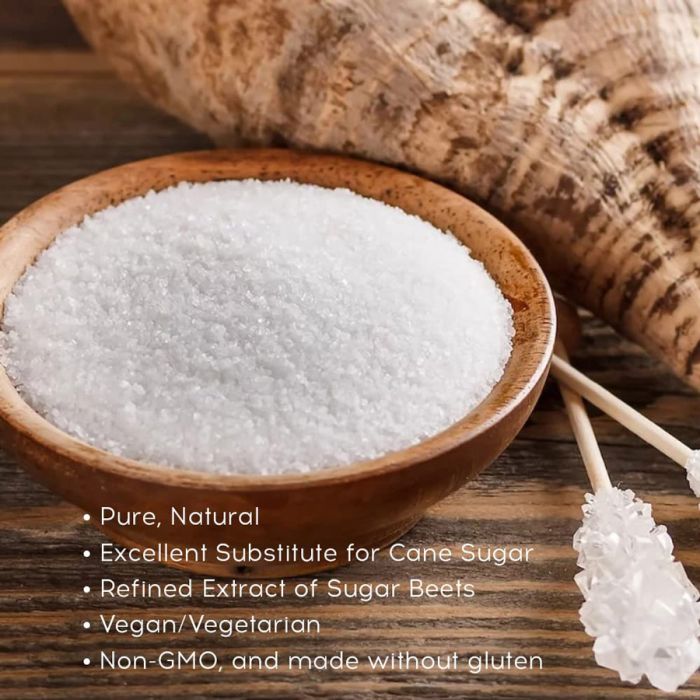The agricultural practices for beet sugar vs cane sugar contribute to differences in processing efficiency.
The agricultural practices for beet sugar vs cane sugar contribute to differences in processing efficiency.
Blog Article
Discover the Uses and Perks of Beet Sugar Vs Cane Sugar in Your Daily Diet
Exploring the distinct top qualities of beet and cane sugar reveals more than simply their sweetening capacities; it highlights their distinct influence on health and culinary arts. Beet sugar, known for its refined taste, is commonly preferred in fragile desserts, whereas cane sugar, with its hint of molasses, adds richness to durable recipes. Each type holds its own dietary account and glycemic implications, welcoming a much deeper understanding of their roles in a well balanced diet regimen and lasting usage practices.
Origin and Manufacturing Procedures of Beet and Cane Sugar

The distinct environments and soil kinds needed for expanding sugar beetroots and sugarcane add to distinctions in their farming techniques and geographic distribution, affecting the economics and sustainability of their production. beet sugar vs cane sugar.
Nutritional Contrast In Between Beet Sugar and Cane Sugar
In spite of originating from different plants, beet sugar and cane sugar are nutritionally really similar, both mostly consisting of sucrose. Each gives concerning 4 calories per gram, equating to about 16 calories per tsp. Structurally, both sugars are made up of around 99.95% sucrose, with very little amounts of various other materials like dampness and trace element, which do not dramatically modify their dietary profiles.

Eventually, when picking between beet sugar and cane sugar based upon nutritional content alone, both offer similar benefits and downsides as they are essentially kinds of additional reading the exact same particle-- sucrose, giving fast energy without various other nutrients.
Effect On Wellness: Glycemic Index and Caloric Content
Exploring additionally into the results of beet sugar and cane sugar on wellness, it is essential to consider their glycemic index and caloric content. The glycemic index (GI) of both beet and cane sugar is around 65, categorizing them as high-GI foods, which can cause quick spikes in blood sugar levels.
Each kind of sugar contains around 4 calories per gram, making their caloric content matching. For those keeping an eye on calorie intake, particularly when handling weight or metabolic health and wellness conditions, understanding this equivalence is essential (beet sugar vs cane sugar). Nonetheless, extreme consumption of any type of high-calorie, high-GI food can contribute to wellness issues such as obesity, heart disease, and insulin resistance.
Environmental and Economic Considerations of Sugar Production
Beyond health impacts, the production of beet and cane sugar likewise elevates significant ecological and financial worries. Sugar beet cultivation often tends to require cooler climates and has a reduced geographical impact contrasted to sugar cane, which thrives in exotic areas. Nevertheless, both plants are intensive in regards to water use and land occupation, possibly causing logging and water deficiency. Financially, the international sugar market is highly volatile, influenced by adjustments in global trade plans and subsidies. Many nations incentivize sugar production through economic assistance, skewing market value and affecting small farmers adversely.
In addition, using pesticides and fertilizers in both beet and cane sugar cultivation can bring about dirt deterioration and air pollution, additional influencing biodiversity and neighborhood water bodies (beet sugar vs cane sugar). The choice between growing sugar beet or cane often rests on neighborhood environmental conditions and economic elements, making the sustainability of sugar manufacturing an intricate issue
Culinary Applications and Flavor Distinctions
While the visit homepage ecological and financial aspects of sugar manufacturing are without a doubt significant, the selection between beet and cane sugar likewise affects cooking applications and flavor accounts. Beet sugar, obtained from the sugar beet plant, is understood for its remarkably neutral taste.
Walking cane sugar, drawn out from sugarcane, frequently preserves molasses traces, which give a distinctive richness and deepness. This slight molasses taste improves the intricacy of baked products, sauces, and marinades. It is especially favored in items where a caramel undertone is desired, such as in brownies or gingerbread. Additionally, the slight variant in wetness web content between beet and cane sugar can influence the appearance and uniformity of meals, making cane sugar a preferred selection for certain dishes that gain from its unique homes.

Conclusion
To conclude, both beet and cane sugar have distinct beginnings and production processes, providing similar dietary accounts with small distinctions in sodium content and taste. While their effect on wellness, especially pertaining to glycemic index and calories, is similar, the option in between them usually comes down to ecological, economic elements, and specific culinary demands. Understanding these aspects can direct consumers in making notified choices that line up with their health Learn More Here and wellness objectives and flavor choices.
Report this page